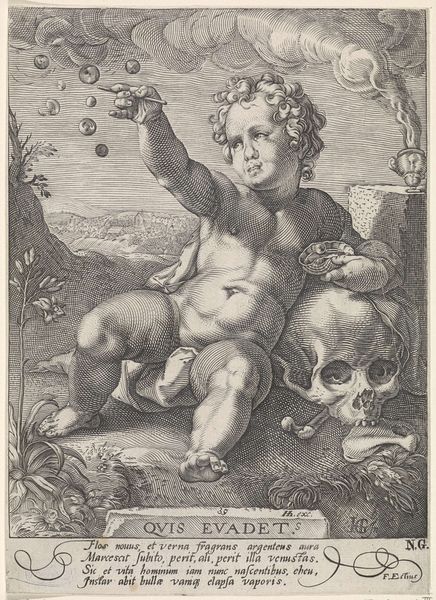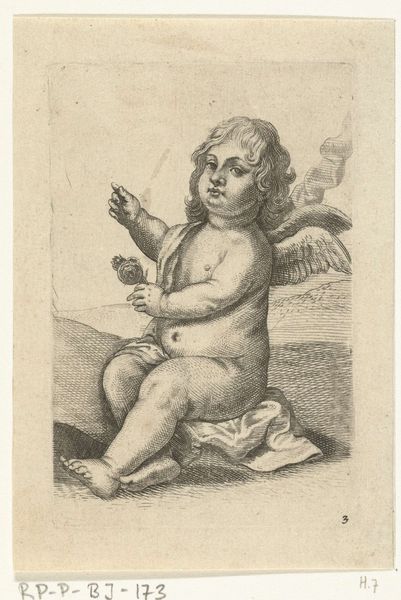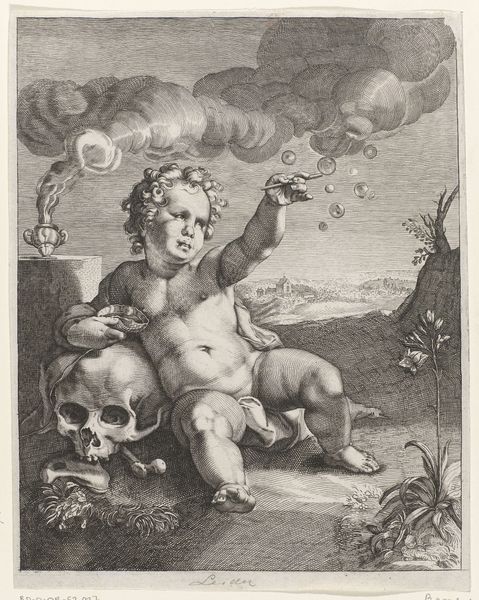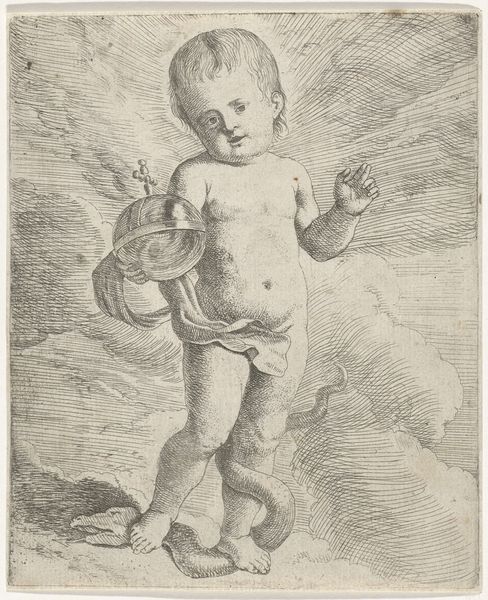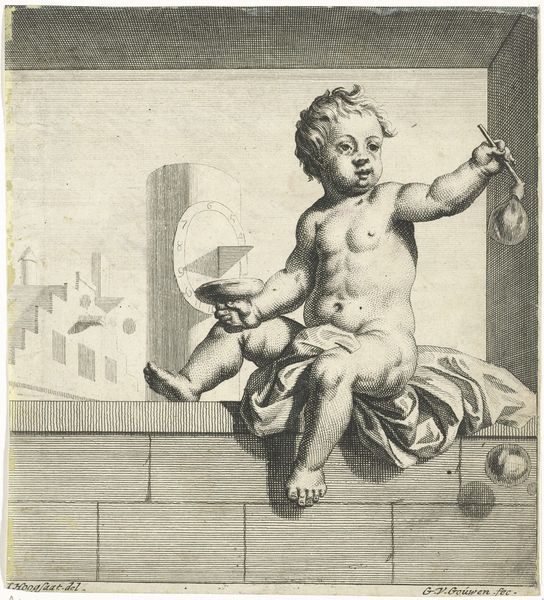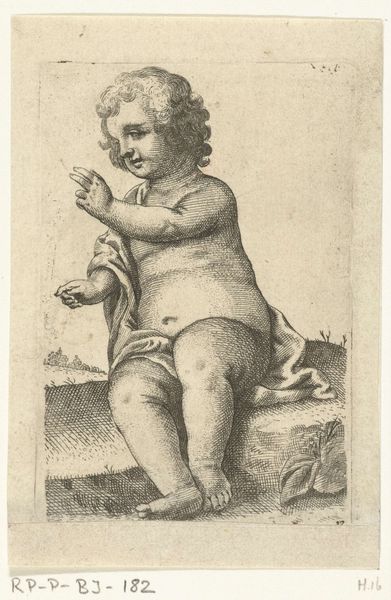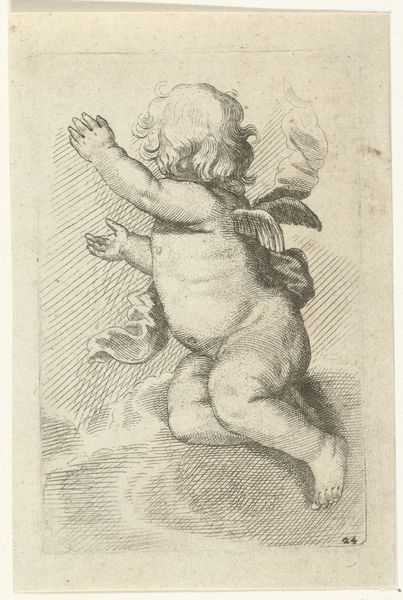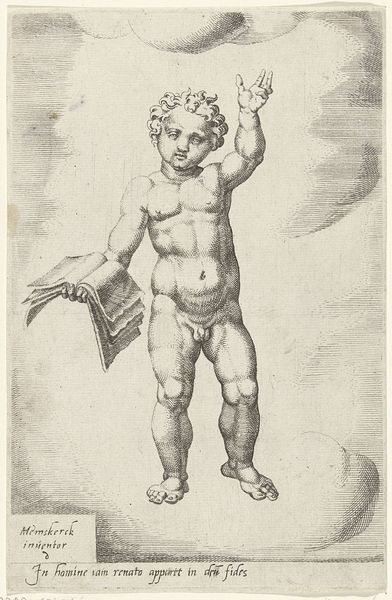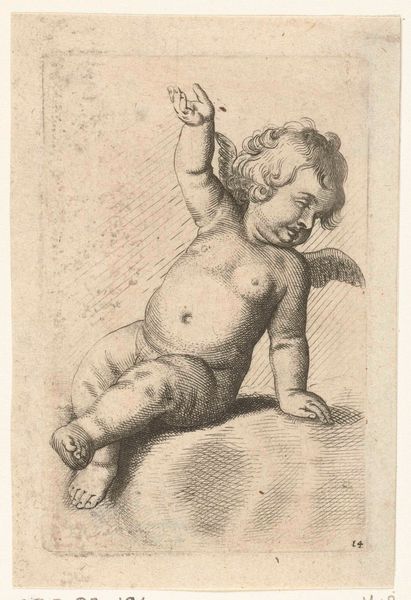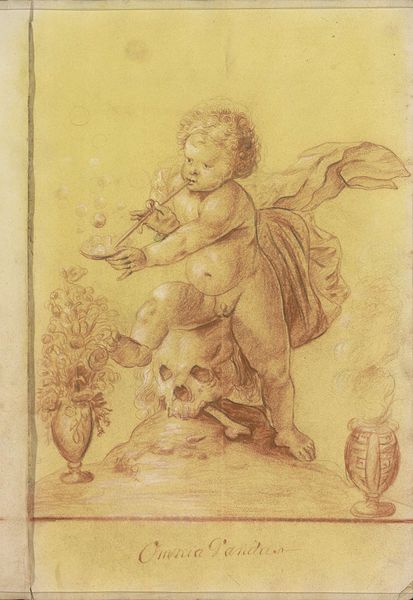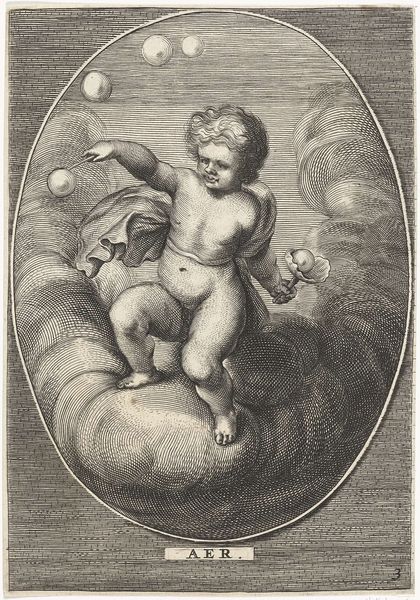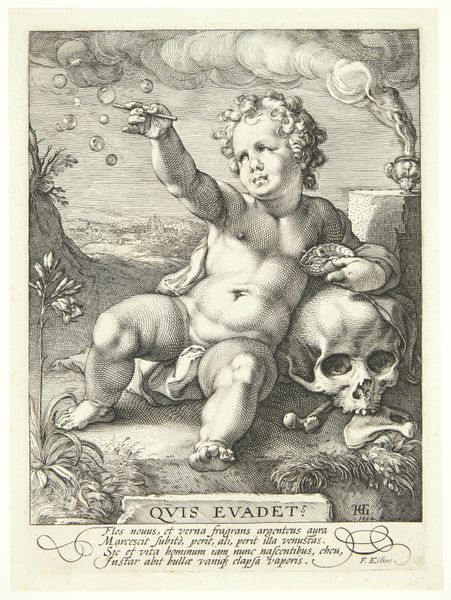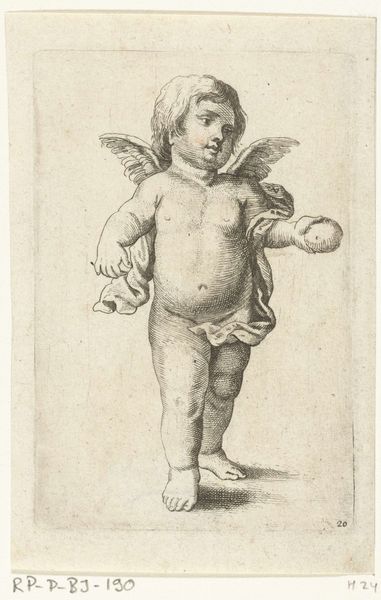
Dimensions: height 295 mm, width 240 mm
Copyright: Rijks Museum: Open Domain
Editor: This is Abraham Delfos' "Vanitas" from 1796, a print piece over at the Rijksmuseum. The juxtaposition of the cherubic figure with the skull is striking. How do you interpret this work from a formalist perspective? Curator: I’m immediately drawn to the contrasting textures and forms. Note how Delfos renders the soft, rounded flesh of the child with delicate gradations, a stark contrast to the hard, angular planes of the skull. Observe also the compositional balance—the child, positioned asymmetrically, leaning on the skull, disrupts any static sense and brings energy. Editor: I see what you mean. The curve of the child echoes the curve of the skull, but rendered in such different ways. It’s quite clever. But is the light important, too? Curator: Precisely! The dramatic chiaroscuro, a Baroque signature, directs the viewer's gaze. See how the light source emphasizes the impermanence – the smoke rising next to the child contrasts the skull itself, suggesting mortality. How does that contrast inform your interpretation? Editor: I guess the fleeting bubbles underscore that too. It’s about capturing a moment. The skill in the printmaking to achieve such nuances is impressive, though! Thank you for illuminating aspects I hadn’t considered before. Curator: Indeed. Focusing on these intrinsic elements helps to understand the print’s strength regardless of any allegorical reading. We discern a balanced tension created from masterful use of tonal variation, form, and composition.
Comments
No comments
Be the first to comment and join the conversation on the ultimate creative platform.
